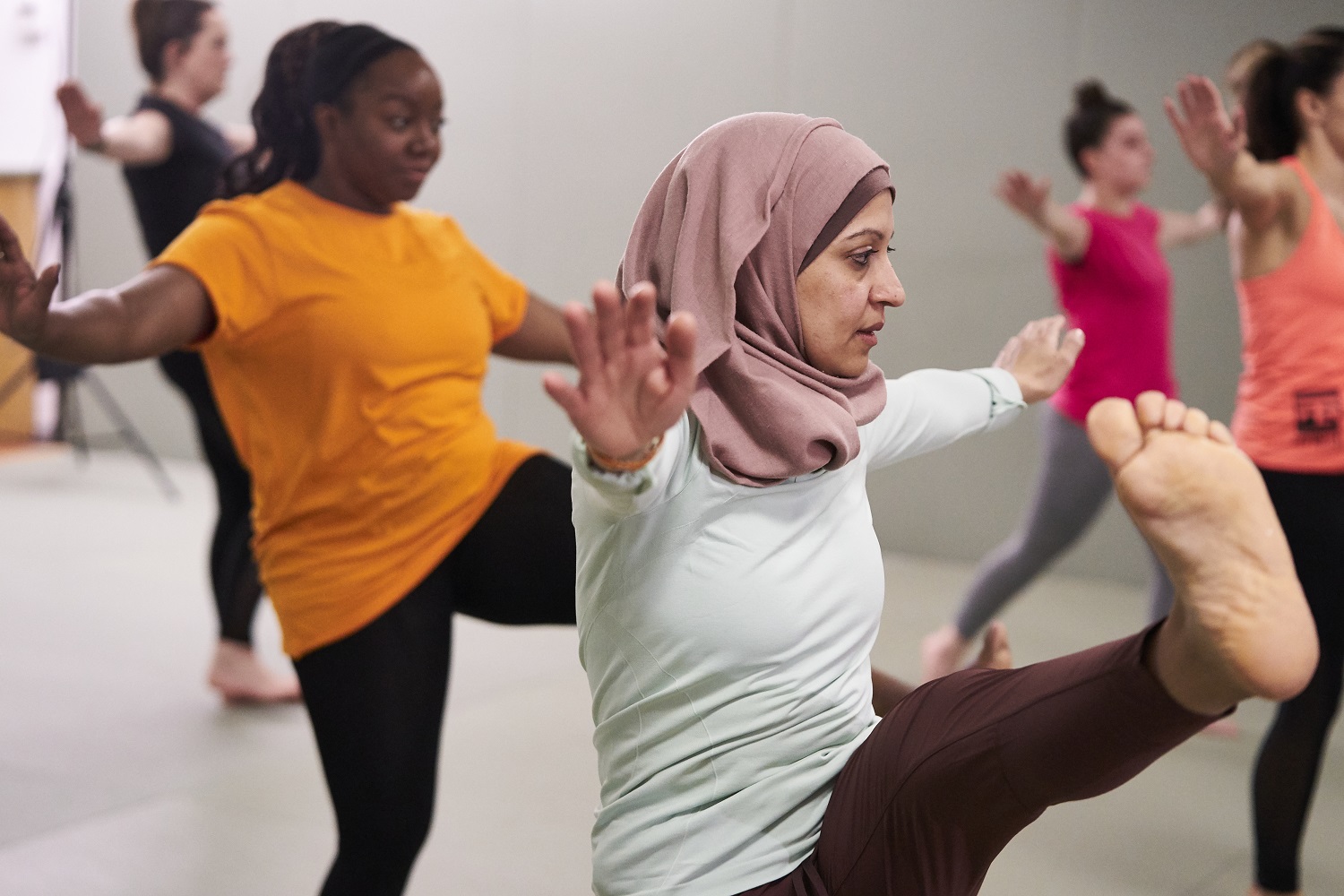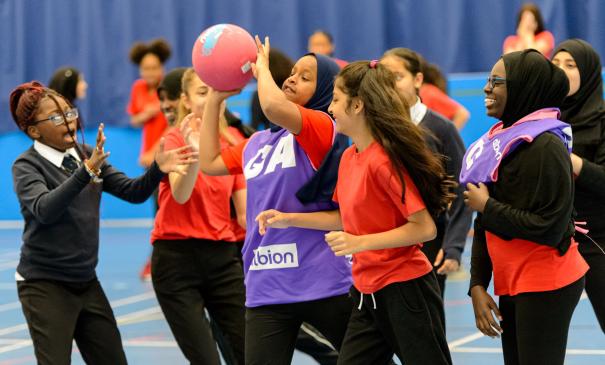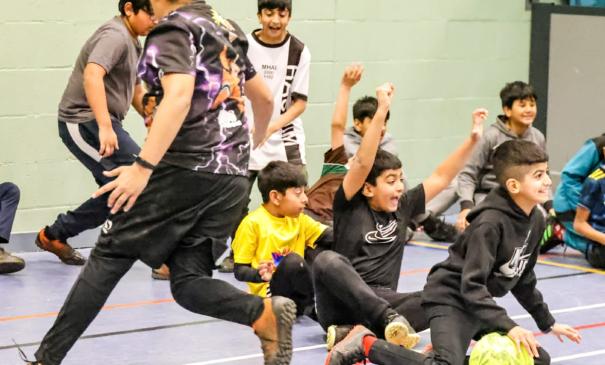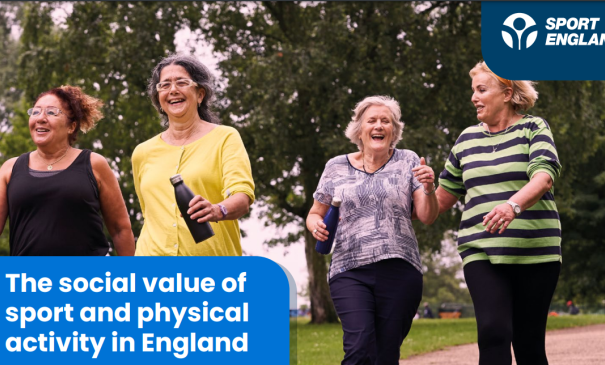 To mark the 2021 International Day of Sport for Development and Peace (IDSDP) on April 6th, the World Health Organisation (WHO) hosted the webinar ‘reINVENT & reBUILD: Stronger, fairer physical activity and sport systems for all’ which more than 700 people attended. Following the high level of interest, a series of follow-up webinars are now planned, with the Coalition due to collaborate on one. Here Fiona Bull MBE, Unit Head for Physical Activity at WHO, explains the thinking behind the series.
To mark the 2021 International Day of Sport for Development and Peace (IDSDP) on April 6th, the World Health Organisation (WHO) hosted the webinar ‘reINVENT & reBUILD: Stronger, fairer physical activity and sport systems for all’ which more than 700 people attended. Following the high level of interest, a series of follow-up webinars are now planned, with the Coalition due to collaborate on one. Here Fiona Bull MBE, Unit Head for Physical Activity at WHO, explains the thinking behind the series.
The importance of physical activity and sport to mental and physical health has been magnified because of COVID-19. During the pandemic, many people have realised, or remembered, how important it is to be active to maintain mental and physical health. Yet, at the same time, the physical activity levels of many countries have been reduced, which – alongside the implications for mental health and wellbeing arising from the anxiety brought on by COVID-19 and the restrictions on the way we live, work and interact – will have a significant impact on the health of individuals and communities.
This is why the World Health Organisation promoted the importance of physical activity and sport on IDSDP, to bring more attention to policies of inclusion and the increased support the physical activity and sport ‘system’ needs, not only as part of the initial responses to COVID-19 but also as a key contributor to the recovery and rebuilding that will be necessary going forward.
INEQUALITIES
The impact of COVID-19 has been visible across many different sectors, from hospitality and tourism, to education, travel and entertainment – and even elite level sport. However on IDSDP we wanted to bring attention to the impact on sport for development and peace (SDP), and community-based ‘sport for all’ approaches. WHO is particularly concerned about the lasting changes the pandemic could have on physical activity, and indeed if people will return to being active. We are concerned about the impact on young people who have missed the experiences and enjoyment of learning new sports at school and after school.
Although we don’t know exactly what the extent and long-term consequences of COVID-19 will be, we do know that prior to the pandemic there were already significant inequalities and too many people were missing out on opportunities to be active. The system has too many gaps, and is not as strong and inclusive as it needs to be. That’s why WHO and the UN more generally suggest we should not see this as a challenge to ‘return to normal’, but rather as an opportunity to return and rebuild a better system of sport, active recreation, active transport, and active play for everyone.
The forthcoming reINVENT webinar series will invite further discussion on how we collectively can build a stronger, fairer and more inclusive physical activity and sport system. Emerging issues from the IDSDP event include the need for stronger awareness and connections within and across the whole ecosystem, and across all of the inter-connected ‘parts’ and ‘players’ that provide the programmes and opportunities, clubs and classes which we need in our communities. A better understanding of who we all are, our strengths and our weaknesses, will help us to appreciate and nurture the connections and relationships between the system’s constituent parts. Everyone working in physical activity and sport shares a common goal to help more people participate and be active, across the life course and wherever they live. So let’s all focus together on preventing people falling through the gaps, never to return to enjoying sport and activity.
It is well recognised that sport still needs to be much more inclusive, and we must double our efforts to address the inequities in access and opportunities, cultures and practices which discriminate against people living with disability as well as people from ethnically diverse groups, women and girls, older adults, and those living in disadvantaged communities. Inequities are a consequence of systems and policy decisions that are unfair and collectively we must address this at all levels and entry points.
CATALYST
Of course this is a huge challenge – but as has been widely noted, we should also see COVID-19 as a catalyst for change and an opportunity. Although it has changed the way we live, how we work, and where we can play and be active, we have been presented with an opportunity to reset – or reinvent – our collective approach, and we can’t afford not to take it.
After all, global data shows that one in four adults and four out of five adolescents do not achieve the WHO recommended levels of physical activity, and many people are increasingly spending more time in sedentary activities. Children aged five to 10 should be a particular priority because we need to create the enjoyable opportunities and develop the health and physical literacy so they can continue active participation through their adolescent years and beyond.

We also need to respond to the clear signals from today’s generation around providing more flexibility, more choice and more variety – which represents a challenge to the ‘traditional’ ways of providing sport. These may require big changes, but what COVID-19 has also shown is that we can change, and change quickly too. Consider the adaptations we have seen happen in days or weeks, such as ‘pop-up’ cycle lanes, and city centres creating more urban spaces to walk and cycle; these have changed travel patterns for many and would otherwise have taken years, or even decades to happen.
Positive and effective changes however must be sustained to have lasting impact, so we also need to improve governance and policy coherence. This will include recognising that creating an active and healthy society is not just an issue for the sports sector, or just the health sector, but in fact it is strongly connected to many other sectors such as the transport sector, urban planning and education. All the policies that impact on physical activity need to be connected and coherent towards a shared goal and with fair distribution of financial resources.
CONVERSATION
The SDP community has a vital role in this reinvention of the sport and physical activity system. Too often hidden from plain view, it is a wide and diverse set of civil society actors and social enterprises, which are already on the ground and embedded in our communities providing great opportunities for people to get active and enjoy, learn and benefit from sport and physical activity. We all need to support this sector to grow and to play a key role in reinventing a stronger fairer system for all.
If the Sustainable Development Goals (SDGs) – first published in 2015 – set a vision for a better, healthier world which no-one can disagree with, then in 2021 COVID-19 obliges us to look honestly at systemic failings and weaknesses in our progress towards 2030. Let us set our path of action so that in the year 2030, we can look back at the last 10 years, and say we did not waste this opportunity and we have created a stronger, fairer and inclusive sports system for all. Please join in the conversation on how we can make this happen.
The author is a staff member of the World Health Organisation. The author alone is responsible for the views expressed in this article and they do not necessarily represent the decisions, policy or views of the World Health Organisation.
- For more information on WHO work on physical activity check out who.int/health-topics/physical-activity/
- To stay in touch with WHO work on physical activity subscribe here.
- The WHO ‘Every Move Counts’ one-minute physical activity promotion video is available for free use.



